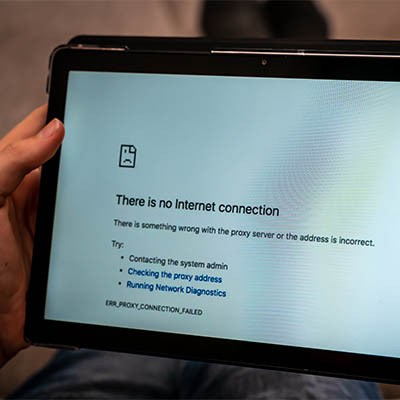JS Business Solutions Blog
Network bottlenecks can be a real problem for businesses that depend on significant data transmission as a part of their day-to-day operations. More companies than ever use a lot of different technologies that chew through bandwidth and it can cause their network to move slowly. Let’s go through some of the steps you should take to eliminate these network bottlenecks.
Technology is usually at the forefront of any major shift in a business’ operations to at least some degree. One interesting technology that has emerged in certain workplaces is augmented reality, or AR for short. Today, we’re considering specific instances where a business can implement AR to surprising benefits.
For any organization that depends on its wireless network, your router is a critical piece of hardware that does more than you may realize. From broadcasting wireless Internet signals to protecting your network from harm, knowing exactly what to do with your router is good knowledge to have. Today, we’ll go through some of the things you should know about your router that will allow you to improve your organization's Wi-Fi significantly.
Wi-Fi is a huge benefit for everyone so knowing the basics of how your router works is a pretty good idea. For the business, the wireless connection can be a central resource for business productivity and data sharing. We thought it would be useful to give you a little more information about router settings to help you understand your wireless connection a little better.
Over the last half-year, Meta, the renowned social media conglomerate (formerly known as Facebook), has been strategically capitalizing on all the drama within Twitter (referred to as X) by introducing Threads, a microblogging community akin to its X counterpart. Today, we will look at Threads by drawing comparisons with Twitter and taking a look at Meta's motivations in enticing users away from the established microblogging giant.
Bandwidth is something that a lot of people have a baseline level of understanding of, but not much else. Today, we wanted to address some of the most frequently asked questions that business owners have about their bandwidth, specifically network bandwidth, and what it means for running your company and business technology most effectively.
When it comes to technology, we all have our preferred ways of doing things. On a computer, you have several ways of accessing the Internet, and we are sure you have your preferred web browsers for accessing it all. Let’s go over how you can ensure that your computer knows what your preferred web 0browser is by switching the default browser settings for your Windows PC.
It’s all well and good to practice caution when clicking on links in your emails, but chances are you’ll eventually have to commit to clicking on one of them, whether you like it or not. In cases like this, it’s best to go against these links armed with as much information as possible about what they are. Let’s go over how you can check their legitimacy quickly and effectively.
Your business might depend on its Wi-Fi, but do you know what the difference between the various Internet channels mean for your connection? You might be in the process of upgrading your router, or maybe you just have questions about what the difference between a “dual band” router is. Let’s discuss routers with today’s blog.
There’s no getting away from streaming nowadays—if you’re not binging something on Netflix/Hulu/HBOmax (etc, etc), you’re listening to your favorite song on your music platform of choice. This is largely due to the rising popularity of the “as-a-service” strategy that cloud services enable nowadays. Let’s take a closer look at streaming, and why it is now so ubiquitous.
The week of June 14th, 2021 saw many applications and websites suffer from outages. This, consequently, created considerable problems for many organizations that used these services. Businesses suffered from continuity issues, but perhaps the biggest takeaway is just how vulnerable the Internet really is to these kinds of issues. What happened, exactly?
With the transition of broadband Internet from a helpful convenience to a prescient need for modern life and business, it is staggering to consider that access to this resource is not equally distributed. While the U.S. Federal Communications Commission intends to change this, they need data to help them gauge the true scope of the problem. To do so, the FCC is pulling out an application that they first released years ago: FCC Speed Test.
When we talk about Internet accessibility (particularly as of late), we mainly focus on the idea of enabling people to use the Internet, regardless of where they may be located. While this is certainly a big issue at the present, there is another kind of accessibility that needs attention: how able those people with disabilities are to use the Internet at all.






















